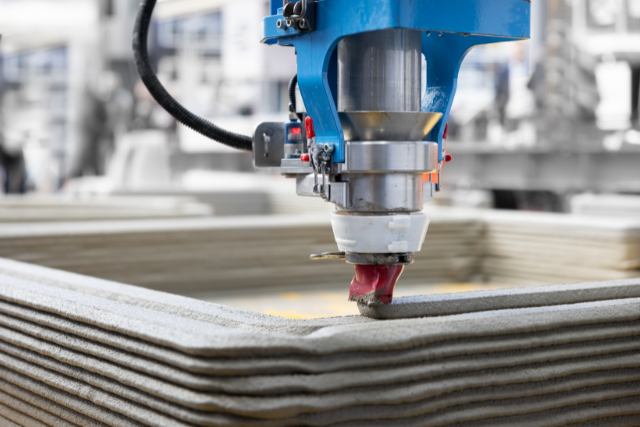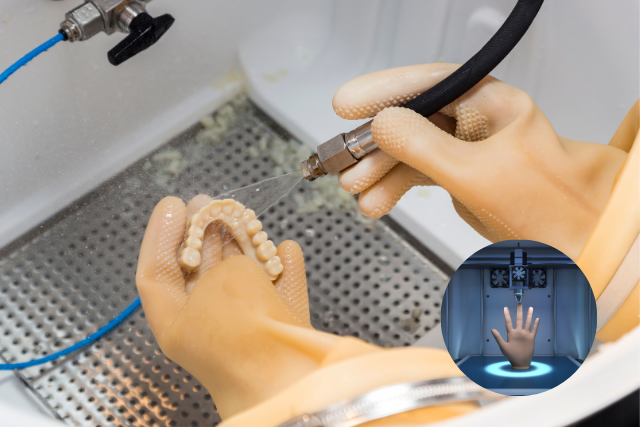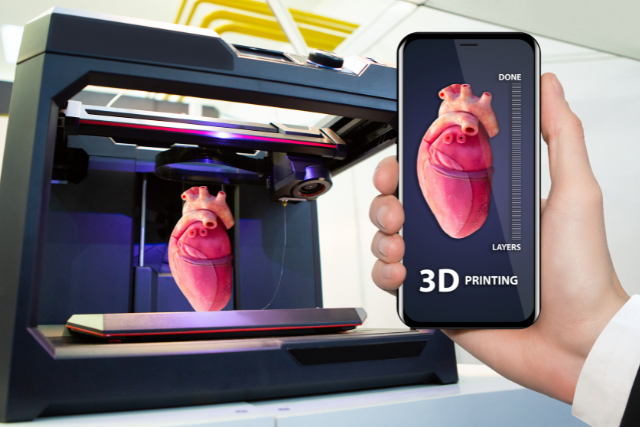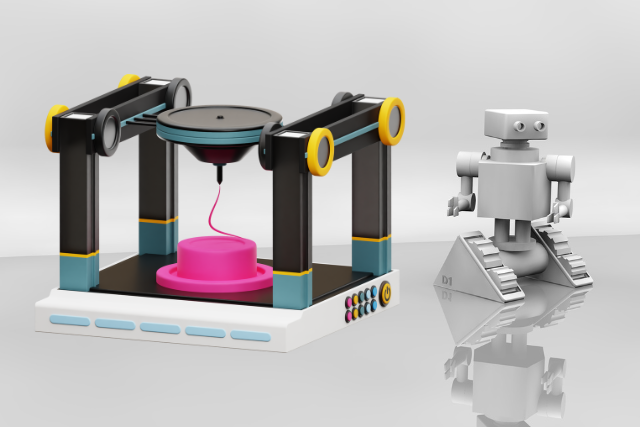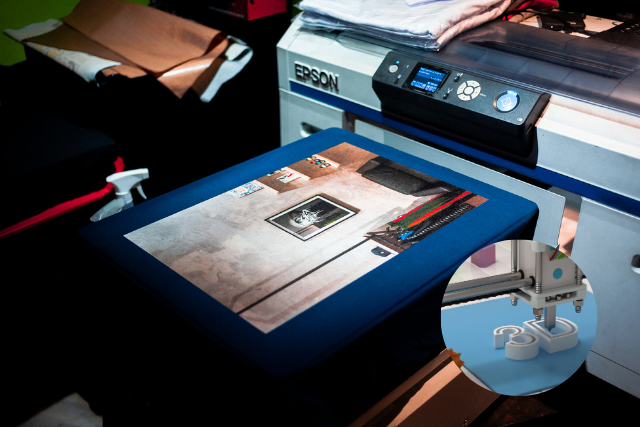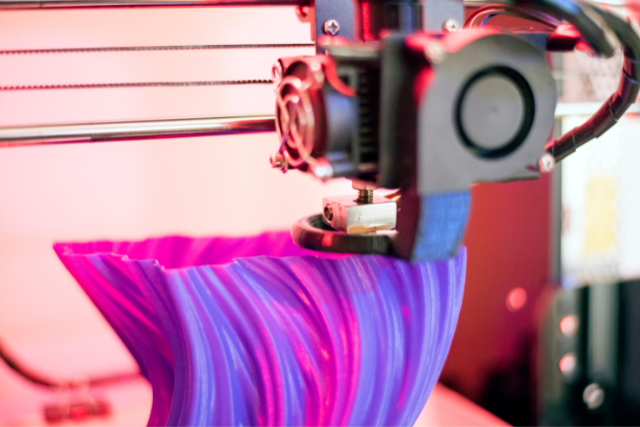The future of 3D printed buildings and infrastructure is super exciting! It’s like a big change is coming to how we build things. With 3D printing, we can make buildings faster and cheaper than before. And guess what? We can make cool designs that we couldn’t even think of making before!
Not only that, but this new technology can also help us be kinder to our planet. We can build houses quickly in places where there’s been a disaster, helping people who need homes fast. But, we also need to think about the problems and important questions that come with using this new tech. It’s like looking at a whole new world of possibilities beyond just drawing up plans.
Key Takeaways
- 3D printing significantly accelerates construction, reducing timelines and labor costs.
- Enables creative architectural designs with high customization and minimal extra cost.
- Promotes sustainability by minimizing waste and lowering carbon emissions in construction.
- Offers rapid, efficient solutions for housing and infrastructure, especially in disaster relief efforts.
Revolutionizing Construction Speed
Speeding up construction, 3D printing is changing how buildings are made, making projects faster and more efficient. This new way of building not only cuts down the time from idea to reality but also reduces the need for lots of manual work, giving workers more freedom from old-fashioned methods. By adding materials layer by layer, 3D printing helps to quickly build structures, potentially shortening project timelines from months to just a few days.
The impact of this faster construction process is big, providing a quick solution to housing shortages, rapidly setting up infrastructure during emergencies, and cutting down on downtime in business projects, boosting the economy. Additionally, the technology can work non-stop without breaks, speeding up project timelines even more.
In simple terms, 3D printing in construction is a major move towards efficiency and speed, bringing a new level of freedom to the industry. It signals a shift towards quicker development and opens up new possibilities in how we plan and carry out construction projects, ultimately changing how quickly we can turn architectural ideas into reality.
Unprecedented Design Flexibility
When we talk about 3D printing, it’s not just about making things quickly. It’s also about giving designers and engineers the freedom to think outside the box and create amazing structures. This technology breaks the rules of traditional construction, allowing us to build things that were once thought impossible. By blending art with functionality, we can now design buildings that not only look great but also work better and are better for the environment.
| Benefits of 3D Printed Design Freedom | Examples |
|---|---|
| Unique Shapes | 3D printing lets architects design intricate shapes and patterns that would be hard to make using regular methods. |
| Personalization | Each building can be customized to fit the needs of the people using it, without costing a lot more money. |
| Green Practices | Making structures on-demand reduces waste and allows for using eco-friendly materials, making sustainable design easier. |
This design freedom opens up new possibilities for creativity and pushes the boundaries of what we can build. It’s not just about function anymore – it’s about turning our wildest ideas into reality and creating a world where every building is a work of art.
Dramatic Cost Reductions
Moving from the idea of having more design options, let’s talk about how 3D printed buildings and infrastructure can help save a lot of money. This includes cutting down on the cost of materials, reducing the need for a lot of workers, and making the construction process much faster and easier.
These changes are not just about saving money but also about transforming how we think about the financial side of building projects. By looking at these important points, we can see how 3D printing technology is set to make construction projects much more cost-effective.
Lower Material Expenses
How can 3D printing help reduce costs in construction? 3D printing is a new way to build things that saves money by using materials more efficiently. Unlike traditional methods, 3D printing only puts material where it’s needed, cutting down on waste.
This means every bit of material has a purpose, which lowers the cost of buying raw materials.
Also, 3D printing can use cheaper, local, or recycled materials without compromising strength. This not only saves money on materials but also helps the environment.
Reduced Labor Costs
3D printing helps reduce labor costs significantly. It makes construction work more efficient by using automation to do complex tasks. This means fewer workers are needed, which saves a lot of money. With 3D printing, creativity and sustainability can thrive without being held back by high costs.
Here’s how 3D printing compares to traditional construction:
- Labor Intensity: Traditional construction requires a lot of labor, but 3D printing needs much less.
- Skill Requirements: Traditional construction needs specialized skills, while 3D printing can be done by a variety of workers.
- Flexibility: 3D printing offers more flexibility compared to traditional methods.
- Speed: 3D printing is faster than traditional construction.
- Cost Efficiency: 3D printing is more cost-effective than traditional methods.
Streamlined Construction Processes
Improving how buildings are made is essential for saving money. Making construction processes more efficient helps to lessen costs even more. New technologies and smart planning make sure that resources are used wisely and construction happens faster.
By using software and 3D printing, designs can be tested and changed quickly. This helps to cut down on waste and environmental harm. 3D printing is precise, which means materials are used efficiently and less is wasted. This method offers a way to break free from old-fashioned building practices and create sustainable, affordable, and top-quality buildings.
Enhanced Sustainability Practices
3D printed buildings and infrastructure are making construction more sustainable. This technology reduces waste by using materials only where necessary. It also helps lower carbon emissions, making construction projects eco-friendly.
Reducing Construction Waste
Using 3D printing in construction can help cut down on waste and be more eco-friendly. Here’s how it works:
- Less Wasted Materials: 3D printers only use what’s necessary, so there’s less leftover material.
- Smart Designs: It can make intricate designs that use less material, making it more efficient.
- Reuse Possibilities: Any extra materials can be reused for future projects.
- Print as You Go: This method reduces the need to store a lot of materials, which often leads to waste.
Lower Carbon Footprint
Using 3D printing in construction helps the environment by reducing the carbon footprint compared to traditional building methods. This new way of building not only changes how buildings are made but also shows a strong commitment to taking care of our planet. By using materials more efficiently and cutting down on transportation and heavy machinery, 3D printing is a smart choice that cuts emissions and saves resources.
Also, by using recycled materials, we can reduce waste and create a more sustainable construction industry. 3D printing is a key player in moving towards a greener future and is reshaping how we build things in a better way.
The Rise of On-Demand Housing
With more people moving to cities, a new idea called on-demand housing is becoming popular. This idea uses fancy 3D printing technology to make affordable and eco-friendly homes quickly. Here’s why this new way of building homes is great:
- Fast Building: Using 3D printing makes building homes much quicker, so we can make more homes faster when needed.
- Save Money: These 3D printed homes are cheaper to build because they need less workers and create less waste, making them more affordable for more people.
- Personal Touch: On-demand housing lets people customize their homes to fit their style and needs, making each home unique.
- Environmentally Friendly: These homes are made with materials that are good for the environment, helping to reduce pollution from construction and supporting global efforts to be more sustainable.
On-demand housing with 3D printing is changing how we make homes. It’s not just about fixing housing shortages but also about creating communities that care about the environment, cost, and personal taste.
Pioneering Infrastructure Projects
In the world of 3D printed buildings and infrastructure, new and innovative projects are changing how we build. Creative bridge designs and environmentally-friendly building ideas are reshaping the construction industry.
These projects show us how we can be more efficient and sustainable while using 3D printing technology to tackle difficult architectural tasks. By using these advanced methods, the industry is creating a new standard for future infrastructure projects.
Innovative Bridge Designs
When it comes to cool bridge designs, there are some awesome ones out there that show how we can make bridges both useful and beautiful. These bridges use new materials and tricks in engineering to make them stand out. They don’t just help us get from one side to the other; they also look super cool and show off how smart humans can be. Here are some great examples:
- 3D-Printed Bridges: These bridges are made using fancy printing technology that makes them strong and cool-looking while using less stuff.
- Smart Sensor-Integrated Bridges: These bridges have sensors that help keep them safe and in good shape by checking on them all the time.
- Modular Construction Methods: These bridges are built in pieces that can be put together fast and in different ways to make them look neat.
- Cantilever Spar Cable-Stayed Bridges: These bridges have a special design that lets them be long and pretty without losing their style.
These bridges show how we can make our world better by building things that are useful, inspiring, and ready for whatever comes next.
Eco-Friendly Building Concepts
Innovative building projects are now focusing more on being eco-friendly. This means they are designed to be good for the environment. One way they do this is by using 3D printing to create structures that use materials efficiently and produce less waste. These buildings also use renewable energy sources like solar panels and wind turbines to generate power.
They even use materials that can break down naturally and include green areas within cities to lower their impact on the environment. By doing all this, these projects not only help the planet but also make the people living in them feel happier and more connected to nature.
3D Printing in Disaster Relief
Using 3D printing technology in disaster relief is a fast, cheap, and effective way to rebuild and provide temporary shelters for those in need.
This new way of helping makes recovery quicker and ensures that everyone gets the help they deserve. By using 3D printing, we can give immediate assistance after natural disasters, giving hope to communities in need.
Some great things about using 3D printing in disaster relief are:
- Quick Building: 3D printers can make shelters and infrastructure much faster than usual, making it faster to give people safe places to stay.
- Saves Money: Using 3D printing reduces waste and the need for skilled workers, making it cheaper to build temporary homes and important buildings. This means more money can be used for other important things after a disaster.
- Tailored Solutions: 3D printing can make structures that fit the specific needs of a place hit by a disaster, like adjusting to the weather and landscape there.
- Environmentally Friendly: By using materials that are good for the environment and creating less waste, 3D printing helps with sustainable disaster recovery, which is important for our planet.
The New Era of Smart Buildings
Entering the new era, smart buildings are a big step forward in how we make homes and offices. They use 3D printing and smart systems to create spaces that can change and adapt to people’s needs in real-time. Smart buildings are all about learning and growing, which is super important in our fast world.
These buildings have sensors and IoT devices that gather info on how they’re used and the environment, helping them make automatic changes to save energy, increase comfort, and boost security. By blending digital and physical elements, regular places become lively spaces that connect with people, predict needs, and run smoothly.
Not only that, smart buildings help the planet too. They use data and AI to lower their impact on the environment and make it healthier. They show us a future where tech and design come together to make free, smart spaces that adapt to how people’s needs change.
Overcoming Traditional Construction Limits
3D printing is a new way to build things that break old rules. It helps solve problems in construction that have been around for a long time. This new technology changes how we build, making it more creative, faster, and better for the environment. With 3D printing, the construction industry can overcome some big challenges:
- Less Waste: Instead of wasting a lot of materials like before, 3D printing uses just what is needed. This helps save resources and is good for the Earth.
- More Design Options: Old methods limited how buildings could look. But with 3D printing, architects can create unique shapes and designs without extra costs.
- Faster Projects: What used to take months can now be done in days. This means buildings can be finished quicker for people to use.
- Lower Costs: By using less labor, reducing waste, and making the process simpler, 3D printing can make projects cheaper overall.
These changes in 3D printing make building better and more affordable for everyone.
Future Visions and Challenges
Looking ahead to the future of 3D printed buildings and infrastructure, we see exciting possibilities and important challenges. This new technology has the potential to revolutionize how we build and develop cities.
However, there are key obstacles that need to be addressed to fully unlock its benefits for society.
| Exciting Possibility | Key Challenge | The Way Forward |
|---|---|---|
| Making Cities Sustainable | Limited Materials | Research on eco-friendly materials |
| Affordable Construction | High Costs | Creating cost-effective models |
| Housing for Everyone | Regulations | Working with policymakers |
The future of 3D printed buildings is not just about creating structures but also about changing how we connect with our surroundings. By using eco-friendly materials, we can expand our cities sustainably, reducing waste and energy use. However, we need to find more materials that are both sustainable and practical for different construction needs.
One big promise of 3D printing is lowering construction costs, which could make housing and infrastructure more affordable. But first, we need to find ways to make the technology cheaper and more efficient on a larger scale.
To make sure everyone has access to quality housing, we must also work with policymakers to create supportive regulations that encourage the use of 3D printing in construction.
Conclusion
To sum up, 3D printing technology is revolutionizing the construction industry by making things faster, more flexible, and cost-effective. It’s breaking old architectural limits, promoting eco-friendly practices, aiding in disaster relief, and promoting smart, customizable housing solutions.
As the industry tackles challenges and explores the possibilities of 3D printing, we’re on the edge of a big change in how we build things, promising exciting progress in design, efficiency, and caring for the environment.

